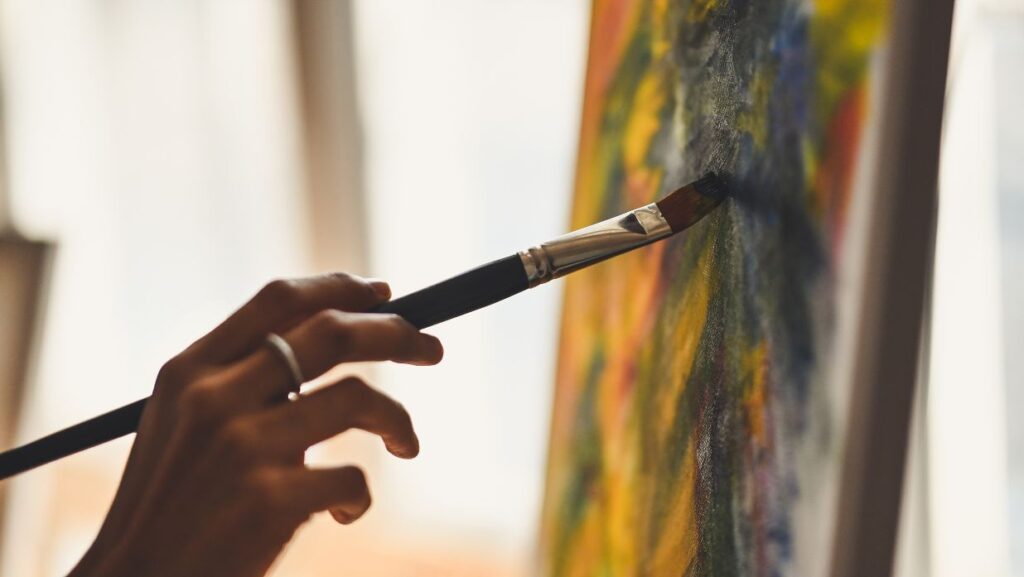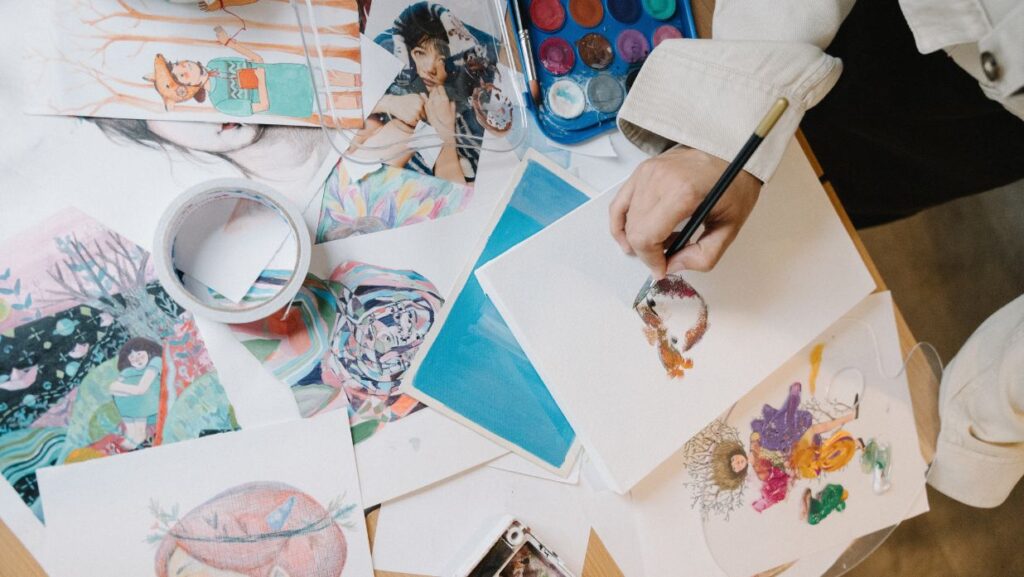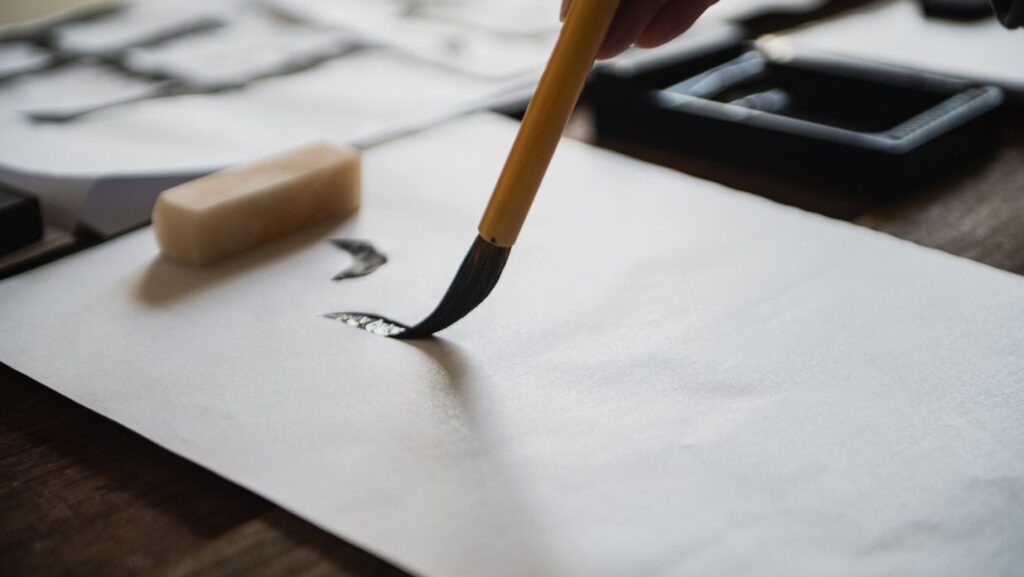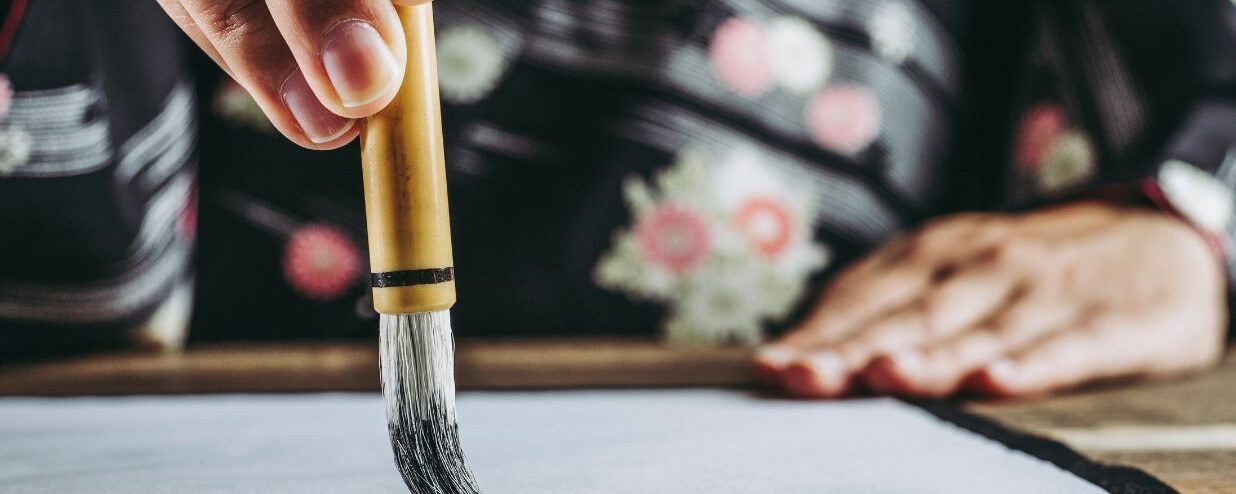If you are a creative professional working in an artistic field—whether in music, painting, writing, composing, or performing—and have always dreamed of living and working in Japan, you may be eligible for the Artist Visa. Unlike regular work visas, the Artist Visa is specifically designed for individuals whose primary activities are in the arts.
However, the Artist Visa is notoriously known to be one of the rarest visas granted in Japan. In fact, Japanese immigration only issues around 300 Artist Visas each year. That doesn’t mean it’s unachievable. Like any visa application, the process can be lengthy and involves several requirements, but possible. Read on for an easy-to-understand guide on the Artist Visa in Japan and how to apply.
What is the 芸術ビサ (geijutsu bisa) or Artist Visa?
The 芸術ビサ (geijutsu bisa), literally translated as Artist Visa, is a type of work visa allowing artists to live and work in Japan. Visa holders must be able to earn their whole living solely from their artistic activities. So, you must be an artist who already has considerable achievements to be eligible.
Some pros of this visa are the flexibility. Unlike the “Engineer / Specialist in Humanities / International Services” visa, Japan’s Artist Visa is intended for independent workers. You don’t need to be tied to a company to get this visa. But employees of a company can receive the visa as well. Another big advantage is that the visa doesn’t have any formal educational requirements.
Keep in mind that this visa is not for hobbyists or people who engage in artistic endeavors as a side job. Your main occupation must be as a professional artist who can generate enough income to live off your artistic pursuits alone. You also need to be quite established in an artistic field.
What activities are permitted under the Artist Visa in Japan?

As the name of the visa suggests, you must be able to engage in artistic activities that can generate enough income for you to make a living. So, any activity in areas such as music, fine arts, literature, among others, is eligible, excluding any activities that fall under the entertainer visa (a visa that allows performers and entertainers to work in Japan).
Since the Artist Visa is a work visa, if you are making enough to support your spouse or children, you can apply for the dependent visa to allow your family to live in Japan with you, and even one day apply for a permanent residence in Japan.
Difference between an Artist and an Entertainer Visa in Japan
What is the main difference between an artist and an entertainer visa? There is some confusion between these visas since they both could fall under similar artistic activities, such as music, but both visas are different.
The entertainer visa is meant for performers who do concerts, shows, theater, and dance performances. Comedians, dancers, live musicians, and other performing artists would apply for the Entertainer Visa.
The Artist Visa, on the other hand, is meant for anyone with an occupation in creative pursuits such as painting, sculpting, or exhibitions. The Artist Visa is meant to grant work for artists who don’t necessarily perform.
Who can get an Artist Visa in Japan?
So, what kinds of occupations are allowed under the Artist Visa? The Artist Visa allows for a broad range of occupations that can be considered to be a type of artist. The actual definition of an artist can be rather vague, but in general, the following are common occupations that are granted the Artist Visa:
- Fine Artists: Painters, sculptors, calligraphers, ceramicists, photographers
- Musicians: Composers, instrumentalists, conductors, singers
- Writers: Novelists, poets, lyricists, playwrights
- Traditional Artists: Practitioners of Japanese arts like ikebana (flower arrangement), tea ceremony, or noh theater
- Performers (in certain cases): Especially solo artists with original work
- Instructors of fine arts, writing, traditional art, music, and film
- Other creators whose work is artistic and original (as opposed to commercial or entertainment-focused)
How to qualify for an Artist Visa in Japan
Just having an occupation in any of the above artistic fields may not be enough, since you need to prove you can generate enough income to make a living currently and in the future.
In general, to be approved for an Artist Visa, you must meet all of the following conditions:
1. Artistic background
You will need to prove your professional credibility and even your contributions, such as through awards or achievements. They can include a portfolio of your work, evidence of your exhibitions or performances, or featured articles from media companies.
2. Work plan in Japan
You will need to show what you are planning to do or what kind of creative activities you will pursue in Japan. If you are a tourist artist, you can show schedules of the exhibitions in Japan, contracts or letters of invitation from galleries, and even an explanation of how your work contributes to Japanese society.
3. Proof of financial stability
Showing achievements, by art competitions and exhibitions, allows the immigration officers to foresee your ability to maintain a stable income over time. Without any achievements, you may not be granted the visa due to a lack of credibility, which would be considered detrimental to income stability.
You can also show documents of your savings and proof of income, your contracts in Japan, or a guarantor. As a general rule, you’ll need to demonstrate that your projected income is sufficient to live in Japan, typically at least ¥200,000 to ¥250,000 per month.
Application process for the Artist Visa from outside of Japan

There are two main pathways to obtaining the Artist Visa: from outside Japan or by changing visa status while you are already in Japan (on a tourist, student, or other visa).
Generally, it might take a longer time to apply for the Artist Visa if you live overseas, because you need to first apply for the Certificate of Eligibility — often called the COE. The COE proves that the foreigner is allowed to enter Japan and that the activity they applied for—like working as an artist—is real and allowed under Japanese immigration rules.
1. Prepare the required documents
Gather all necessary documents to support your Artist Visa application. This typically includes:
1. A copy of the application for the Certificate of Eligibility
2. Portrait Photo
- The photo must be 30 mm x 40 mm and attached to the application form
3. Standard-sized envelope for the documents with a postage stamp and written address
4. Any of the following that can clarify the applicant’s activities:
- Document(s) showing work contracts you have received, which can certify content, duration, position, and remuneration of artistic activities or projects; basically, an offer letter could suffice if all the information is included.
- If you will be engaging in activities not based on a contract with a public or private organization or individual, A document created by the applicant detailing the specific content of the activities, the duration of the activities, and the expected amount of income to be generated from such activities (you may use any suitable format).
5. A resume detailing your artistic career
6. Any of the following clearly demonstrates achievements in artistic activities:
- Letter of recommendation from a related organization
- Report on any past artistic activities
- Achievements such as awards, selections, recognition
- Portfolio or catalog of past work
- Anything equivalent to the above
2. Submit the documents to the immigration officer
Submit your documents, alongside the COE, to the local immigration bureau in Japan. You can do this in person or through a representative like your lawyer. COE processing time is about 1–3 months, but it can vary depending on the influx and backlog of applications.
3. Receive Certificate of Eligibility (CoE)
With the COE, you can apply for the actual visa at your local Japanese consulate or embassy
4. Apply for the Artist Visa
Once your COE is issued, take it to your nearest Japanese embassy or consulate along with the following documents:
- Valid Passport
- Completed Visa Application Form
- One ID Photo (4.5 cm × 3.5 cm)
- Original Certificate of Eligibility (CoE)
- Visa Fee (varies by nationality)
After you submit all the required documents, the usual processing time is around 5–10 business days. Once issued, you must enter Japan within 3 months of CoE issuance.
5. Enter Japan
The duration of an Artist Visa in Japan typically ranges from 3 months to 5 years. While there is no specific rule for how long you qualify for, the general expectation is that more established or recognized artists may be granted a longer visa duration. However, when in doubt, it’s often safe to apply for the maximum duration (5 years), especially if you plan to stay in Japan for an extended period. Additionally, the visa is renewable, and your eligibility for renewal usually depends on maintaining consistent and ongoing activity within your artistic field.
Need help finding a job to work as an artist in Japan? Check out our blog for the best job hunting websites.
Application process for Artist Visa for those living in Japan

If you’re already in Japan under another long-term visa, such as a student visa, a working visa, or a dependent visa, and want to change to an Artist Visa, you do not need to apply for a COE. Instead, you have to submit an Application for Change of Status of Residence (在留資格変更許可申請). Below are the required documents:
1. Application form for “Change of Status of Residence”
2. Portrait Photo: Photo must be 30 mm x 40 mm and attached to the application form
3. Passport and residence card
4. Any of the following documents that clarify the applicant’s activities
- Document(s) showing work contracts you have received, which can certify content, duration, position, and remuneration of artistic activities or projects; basically, an offer letter could suffice if all the information is included.
- If you will be engaging in activities not based on a contract with a public or private organization or individual: A document created by the applicant detailing the specific content of the activities, the duration of the activities, and the expected amount of income to be generated from such activities (you may use any suitable format)
5. Materials clarifying artistic achievements
6. A resume detailing your artistic career
7. Any of the following that clearly demonstrates achievements in artistic activities:
- Letter of recommendation from a related organization
- Report on any past artistic activities
- Achievements such as awards, selections, recognitions
- Portfolio or catalog of past works
- Anything equivalent to the above
Immigration officers may ask for additional documents depending on your specific circumstances. The processing time can take around 1 to 3 months, and you will need to purchase a revenue stamp (around ¥4,000) when the change of residence is approved.
Extending your stay as an artist in Japan
Once you have your Artist Visa—congratulations! But keep in mind that it’s not permanent. If you find yourself loving life in Japan and want to continue building your artistic career here, you can apply to extend your visa.
To extend your stay with an Artist visa, the process and required documents are mostly the same, changing your visa status, except you submit an application for “Extension of Period of Stay” (在留期間更新許可申請書) instead of the “Change of Status of Residence”.
You will also need to submit a residence tax certificate and a tax payment certificate, which states your total income and tax payment status for the year. However, based on your records of ongoing artistic activities and your specific circumstances, you may need to submit other documents that will prove you will have stable income.
Conclusion: Is the Artist Visa right for you?
The Artist Visa in Japan offers a unique opportunity for creative professionals to live and work independently while pursuing their artistic endeavors. To succed in getting one, you’ll need to demonstrate artistic achievements, stable income as an artist, and a clear artistic plan.
While speaking Japanese isn’t strictly required, having basic skills can make a big difference—it helps with networking, communicating with immigration officials, working with your lawyer, and navigating Japan’s bureaucracy. If you want to improve your Japanese, consider joining Coto Academy! With tailored courses designed for professionals and creatives, our Japanese intensive courses and part-time Japanese lessons help you build the language skills you need to thrive in Japan.
Fill out the form below for a free level check and consultation!
FAQ
What is an Artist Visa in Japan?
The Artist Visa is a type of work visa that allows foreign artists to create art, perform, or pursue creative endeavors in Japan without needing to be tied to an employer. The visa allows anyone who can live off their artwork, through independent projects or contracts, to live in Japan.
Is it difficult to get an Artist Visa in Japan?
Artist Visa in Japan is one of the rarest visas, with only 300 visas issued yearly in Japan. For those just starting their life as an artist, this visa might be difficult to receive since achievements such as awards or recognitions are highly considered for visa eligibility. However, for those more established, this visa may very well be within reach. You will also need to show proof of income stability, such as contracts or offer letters with details such as remuneration included.
What is the duration of the Artist Visa in Japan?
The standard duration of the Artist Visa could be any of the following, depending on the individual’s circumstances: 3 months, 1 year, 3 years, or 5 years.
What is the difference between an Artist Visa and an Entertainer Visa?
The main difference is that the Entertainer Visa is meant for those who will perform for entertainment (concerts, shows, theaters), while the Artist visa is meant for foreigners to make a living by creating art (painting, sculpting, writing, photographing, music) that’s not specifically for entertainment purposes.
Like what you read? You might be interested in:
- Guide to Digital Nomad Visa in Japan
- Guide to Japanese Working Holiday Visa
- Guide to Student Visa in Japan
Disclaimer: The information provided here is for general guidance only and does not constitute legal advice. Immigration policies and procedures in Japan are subject to change, and individual circumstances can vary. For the most accurate and up-to-date information, we recommend consulting with an immigration lawyer or referring to the official Ministry of Foreign Affairs of Japan website.
